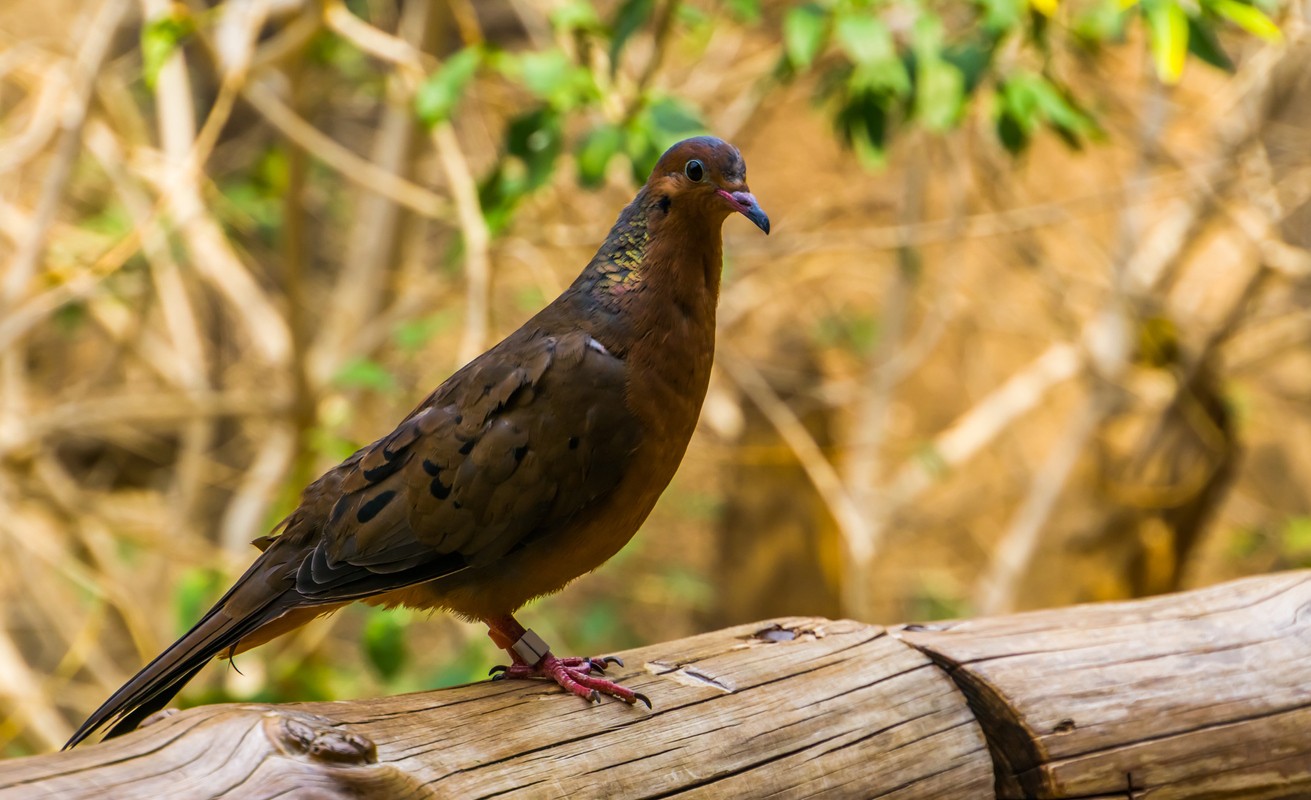Socorro Dove
A species of Zenaida Doves Scientific name : Zenaida graysoni Genus : Zenaida Doves
Socorro Dove, A species of Zenaida Doves
Botanical name: Zenaida graysoni
Genus: Zenaida Doves
Content
Description General Info

Description
The Socorro dove is a medium-sized, principally terrestrial dove with long legs for a zenaida dove. It is 26.5–34 cm (10.4–13.4 in) long and weighs 190 g (6.7 oz) on average. In overall color pattern, it agrees with its relatives. It is considered to be a stronger-colored insular representative of the mourning dove. The male is deep cinnamon on its head and underparts, with an ear streak like its relatives. The nape is blue-grey and the neck has an iridescent pink patch, most prominent after moult. The upperparts are rufous brown. Female and juvenile coloration is slightly duller. The most conspicuous differences from the mourning dove, darker coloration and more well-developed feet, were useful amid the dark lava rock and the shady forests of its island home, where native mammalian predators were absent but constant threats from red-tailed hawks and great frigatebirds were present. The advertising call begins with a disyllabic coo, followed by three single calls, and ends with another disyllabic coo: "Coo-oo, OO, OO, OO, Coo-oo". Each of these 5 elements takes a little less than one second. The arid and fairly barren Clarión Island, some 400 km (250 mi) west of Socorro, has an endemic subspecies of the mourning dove, Zenaida macroura clarionensis. These birds are roughly intermediate in appearance between the Socorro dove and the mainland mourning doves. It is highly likely that they represent a later colonization by mourning doves (rather than earlier stock), which evolved its phenotype independently from but in parallel with the Socorro birds. This would mean that predation by great frigatebirds is significant enough to select towards a cryptic darkening of the plumage, as these are the only predators of Z. m. clarionensis. On a semidesert island such as Clarión, birds would be expected to evolve towards lighter plumage, to better withstand the heat and lack of reliable freshwater sources, in accordance with Gloger's Rule. The upper elevation limit of the doves is 950 m. 
Size
34 cm
General Info
Species Status
The Socorro dove is thought to have been extirpated mainly by feral cats, but high levels of understorey grazing by sheep could have limited the population. Human hunting might have temporarily brought down numbers, though little permanent settlement exists on Socorro. Cats were introduced apparently in the early 1970s. They do not seem to have been present in 1953. The species reproduces no less willingly in captivity than other Zenaida doves, provided its different ecological needs are addressed. Most of the surviving birds are in zoos and other facilities in Germany and the United States. On October 30, 2006, the Socorro dove was successfully bred at the London Zoo. The bird was named "Arnie", after Arnold Schwarzenegger, with reference to his famous line "I'll be back" (on Socorro Island), although Arnie was subsequently discovered to be female. It is hoped that the descendants of Arnie and her relatives can someday soon be reintroduced into the wild. As of early 2006, it was being prepared to remove the sheep and to rid the island of cats. In the meantime, with the maintenance of the remaining birds, stock for reintroduction is being provided. 


Scientific Classification
Phylum
Chordates Class
Birds Order
Pigeons and doves Family
Dove Genus
Zenaida Doves Species
Socorro Dove